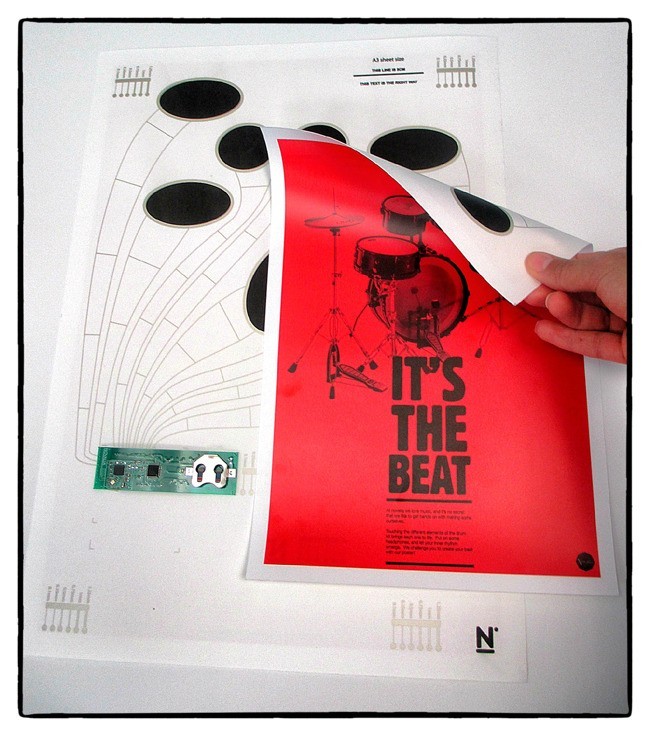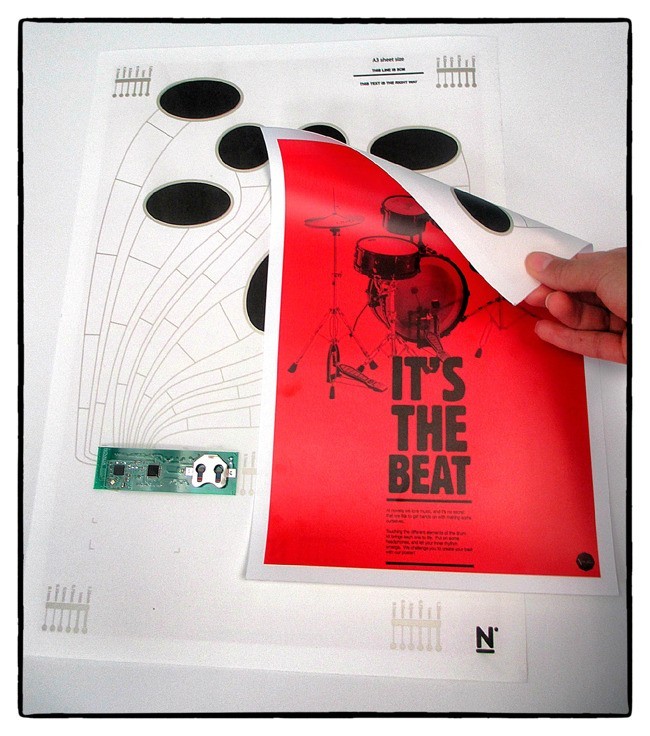
Research Team Adds Touch Overlay To Print Poster; Makes Interactive
July 30, 2013 by Dave Haynes
The conventional wisdom is that digital will continue to inexorably replace paper signage, but a research team in the UK has come with something like a hybrid. They’ve made paper interactive.
Novalia is a team of seven scientists, programmers and designers from the UK – all of whom are interested in turning paper into an interactive platform.
Their first venture into this territory is an interactive drum-kit poster. Able to produce up to seven different sounds, the team say you could play along to your favorite songs, or add your own beats to existing ones. Using printed touch technology you could have easy access to a seven-piece drum-kit – without even needing any sticks!
It works using touch sensors printed with electrically conductive ink, to which a simple circuit board is attached. The poster then recognizes when a graphic has been touched, in much the same way as the touchscreen on a smart device recognizes your fingers.
There are two versions – one that uses Bluetooth to push the sound to an iPad or iPhone, and the other that uses the paper’s surface as the speaker.
The team from Cambridge has a Kickstarter pitch up, raising about $60,000 that would get this to a more cost-efficient production run. Right now the posters are handmade.

The Kickstarter site explains:
We print the graphics on the face of the paper substrate, on the reverse we print the touch sensors using electrically conductive ink. To this we electrically attach our small, simple circuit board. The circuit board monitors the capacitance of each of the drum sensors and recognizes when the graphics are touched, in much the same way as the touchscreen on a smart device recognizes your touch.
When a drum is touched the software running on our circuit board recognises which drum has been touched and, depending on which version you have, either plays the sounds directly out of the poster, or sends a wireless signal via bluetooth to the iOS device to play the corresponding drum sound.
A static image is all some marketers want or need, but if you could add vocal messages or music – think clubs and concert venues with endlessly rotating acts – that would have an appeal.



Leave a comment